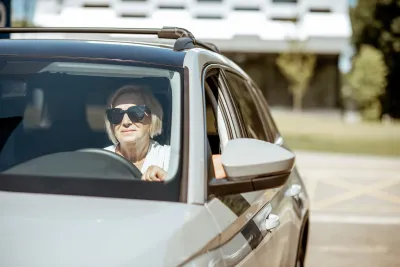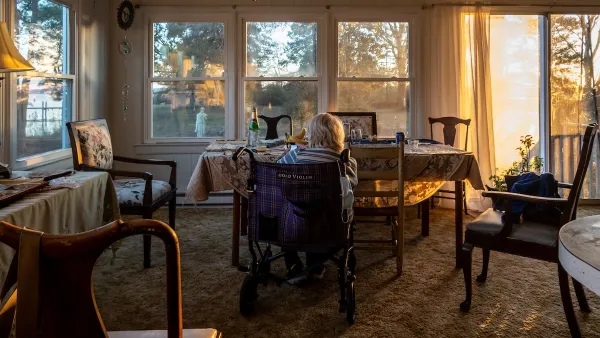Limited transit options and a lack of walkability mean more older Americans will continue to drive their cars as they age.

A survey conducted by the AARP reveals that many older Americans don’t believe they’ll ever have to stop driving, according to an article by Lloyd Alter.
The survey finds that adults 50-plus expect to make changes as they age, including bathroom changes and even anticipate the need for ramps and chair lifts. But there is no mention anywhere of the most significant and dramatic change in people’s lives as they age: the ability to drive.
Studies have found that older drivers can expect roughly seven to 11 years of life after driving becomes difficult or impossible. “That might mean 11 years of failing health in a single-family house in the suburbs, without a car, without family nearby, and without being in a walkable neighborhood.” And a 2020 study found a preference for personal vehicles even when public transit is available. “As a result, driving is synonymous with personal transportation mobility, and driving cessation is associated with loss of independence combined with becoming a burden to family and friends,” that study noted.
The AARP survey includes recommendations for how communities can better accommodate older residents and provide alternatives to driving. For Alter, “We need accessible housing, and walkable communities with good sidewalks, corner stores, medical facilities and coffee shops within a reasonable distance. We need good safe accessible transit for when we have to go further. We all must prepare for a non-driving future.”
FULL STORY: Survey: Boomers Don’t Accept That They Won’t Be Able To Drive Forever

National Parks Layoffs Will Cause Communities to Lose Billions
Thousands of essential park workers were laid off this week, just before the busy spring break season.

Retro-silient?: America’s First “Eco-burb,” The Woodlands Turns 50
A master-planned community north of Houston offers lessons on green infrastructure and resilient design, but falls short of its founder’s lofty affordability and walkability goals.

Delivering for America Plan Will Downgrade Mail Service in at Least 49.5 Percent of Zip Codes
Republican and Democrat lawmakers criticize the plan for its disproportionate negative impact on rural communities.

Test News Post 1
This is a summary

Test News Headline 46
Test for the image on the front page.

Balancing Bombs and Butterflies: How the National Guard Protects a Rare Species
The National Guard at Fort Indiantown Gap uses GIS technology and land management strategies to balance military training with conservation efforts, ensuring the survival of the rare eastern regal fritillary butterfly.
Urban Design for Planners 1: Software Tools
This six-course series explores essential urban design concepts using open source software and equips planners with the tools they need to participate fully in the urban design process.
Planning for Universal Design
Learn the tools for implementing Universal Design in planning regulations.
EMC Planning Group, Inc.
Planetizen
Planetizen
Mpact (formerly Rail~Volution)
Great Falls Development Authority, Inc.
HUDs Office of Policy Development and Research
NYU Wagner Graduate School of Public Service





























